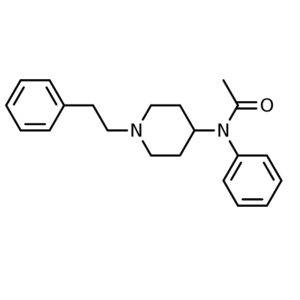New Psychoactives
Psychoactive vs Psychedelic: Understanding the Difference
In recent years, the conversation around plant medicines, cannabinoids, and natural compounds has grown rapidly. As people explore wellness, therapy, and alternative remedies, terms like psychoactive vs psychedelic often come up—but they are not the same. While both affect the brain and perception, the differences are important for anyone looking to understand or safely explore these substances.
This guide dives into what makes something psychoactive, how it compares to psychedelic effects, and where psychotropic compounds, psychoactive cannabinoids, herbs, and spices fit into the bigger picture of mental health, wellness, and culture.
Psychoactive vs Psychedelic: The Core Distinction
The word psychoactive describes any substance that alters the brain’s activity, mood, consciousness, or behavior. This is a very broad category that includes everyday substances such as caffeine, nicotine, alcohol, and cannabis. In short, if something changes the way you think or feel, it can be considered psychoactive.
What Does “Psychedelic” Mean?
A psychedelic, on the other hand, is a more specific type of psychoactive substance. Psychedelics—like psilocybin mushrooms, LSD, and DMT—are known for altering perception, creating visual or sensory distortions, and often producing deep emotional or spiritual insights. Unlike general psychoactives, psychedelics are usually associated with expanded states of consciousness.
Why the Distinction Matters
When comparing psychoactive vs psychedelic, the key difference lies in intensity and purpose. Psychoactives can be mild (like coffee boosting alertness), while psychedelics often lead to profound, mind-altering journeys. Understanding this difference helps consumers, researchers, and patients make informed choices about which compounds align with their needs.
Psychoactive vs Psychotropic: Clearing the Confusion
The terms psychoactive and psychotropic are sometimes used interchangeably, but they carry slightly different meanings.
- Psychoactive: Any substance that affects the mind or mental state.
- Psychotropic: Usually refers to medications that treat mental health conditions, such as antidepressants, antipsychotics, and anti-anxiety drugs.
In everyday language, “psychoactive vs psychotropic” may sound like the same thing, but in medical and scientific contexts, psychotropic often points to pharmaceuticals, while psychoactive is a much broader category that includes both natural and synthetic substances.
Psychoactive Cannabinoids: Beyond THC
Cannabinoids, the active compounds in cannabis, are an excellent example of psychoactive substances. Some cannabinoids affect the mind, while others do not.
THC: The Classic Psychoactive Cannabinoid
Tetrahydrocannabinol (THC) is the most well-known psychoactive cannabinoid, responsible for the euphoric “high” associated with cannabis. THC interacts with the brain’s endocannabinoid system, altering perception, mood, and cognition.
CBD: A Non-Psychoactive Counterpart
In contrast, cannabidiol (CBD) is often described as non-psychoactive—though technically, it still has mild effects on mood and relaxation. Unlike THC, CBD does not create intoxication but has therapeutic potential for anxiety, pain, and sleep.
Emerging Cannabinoids
Beyond THC and CBD, other cannabinoids like Delta-8-THC, CBN, and THCV are gaining attention for their unique effects. Some are mildly psychoactive, offering alternative ways to experience cannabis without overwhelming intensity.
Psychoactive Herbs and Spices: Natural Pathways to Altered States
Long before modern science studied psychedelics, cultures around the world turned to plants, herbs, and spices for their psychoactive properties.
Traditional Herbs
- Kava: Used in South Pacific rituals, kava has calming, psychoactive effects that ease anxiety and promote relaxation.
- Damiana: A fragrant herb sometimes used as an aphrodisiac and mood enhancer.
- Mugwort: Known for its role in lucid dreaming practices.
Common Psychoactive Spices
- Nutmeg: In high doses, nutmeg can produce mild hallucinations and euphoria, though often with unpleasant side effects.
- Cinnamon & Clove: While not strongly psychoactive, these warming spices influence mood and stimulation in subtle ways.
Modern Wellness Applications
Today, many of these psychoactive herbs and spices are being revisited in teas, supplements, and holistic remedies. Their long-standing cultural use highlights how psychoactive plants have always played a role in human health and spirituality.
Why Understanding Psychoactive Substances Matters
Whether exploring plant-based remedies, cannabis products, or traditional psychedelics, knowledge is key. Recognizing the differences between psychoactive vs psychedelic, or psychoactive vs psychotropic, allows consumers to choose wisely and safely.
For those exploring psychoactive cannabinoids, understanding the nuances between THC, CBD, and other compounds helps tailor the experience. And for wellness seekers, psychoactive herbs and spices offer natural, gentle alternatives that have stood the test of time.
Conclusion: Discover the World of Psychoactive Compounds
From caffeine and cannabinoids to ancient herbs and modern psychedelics, psychoactive substances have shaped cultures, therapies, and lifestyles for centuries. Knowing the distinctions between psychoactive vs psychedelic, exploring the role of psychoactive cannabinoids, or revisiting time-tested psychoactive herbs and spices opens the door to informed exploration and personal growth.
